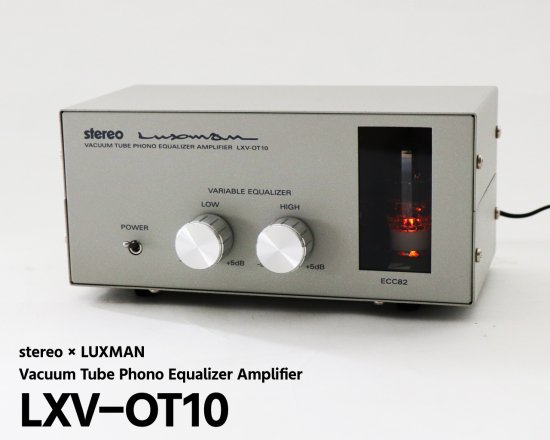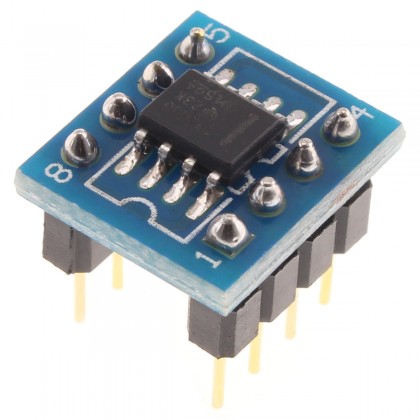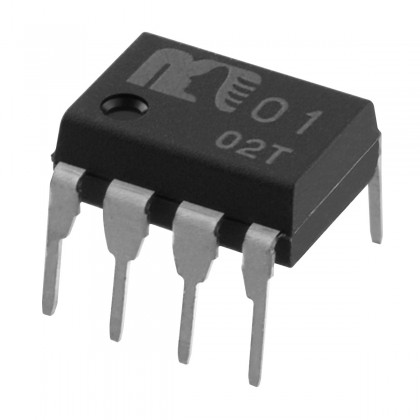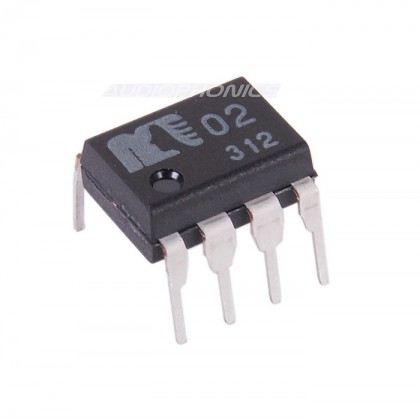Op-amp rolling the stereo x LUXMAN LXV-OT10

Background
Last month, I put together a Luxman "kit" phono equalizer and posted the measurements.

 www.audiosciencereview.com
www.audiosciencereview.com
TLDR? The Luxman saturates quickly and early with its tube buffer, so it's not intended for transparency and adds a ton of harmonic distortion. It actually sounds great in moving magnet mode with my Sony PSX-555ES/Shure V15VMR and my Sharp RP-117 (3 mV output) but it was unusable in moving coil mode with my Monster Cable Sigma 2000 MC (0.2 mV output) due to excessive noise overwhelming the signal at any listening level. To be fair, the manual does warn about using low output MC cartridges of 0.2 mV or lower.

In the discussion, @AnalogSteph stated "With this circuit I would explicitly condone opamp rolling. It is absolutely hopeless otherwise."
Let's test this out! AnalogSteph had recommended the OPA1656.
This chip doesn't fit in the common DIP8 packaging, but thankfully @Audiophonics sells a pre-modified OPA1656 for 5 €. Not only was that affordable, I could trust that the op-amps would be legitimate. Shipping from France to the United States is pricey, so I picked up few extra OPA1656's and also got the most expensive single-chip OP-AMPs that Audiophonics had at 25€ and 33€, the NJR MUSES01 (J-FET) and MUSES02 (Bipolar). The instruction manual includes an article by stereo magazine who specifically recommends the NJR MUSES line for op-amp rolling.



Test Setup
The tube dominates SINAD and noise is the audible problem, so for these measurements, I shorted the inputs and then used my E1DA Cosmos ADC Grade A by @IVX and Multitone by @pkane to measure the noise as described in μV. The E1DA Cosmos had been calibrated using a 20,000 count true RMS meter in the mV and V range, and I am relying on the linearity of the E1DA to accurately represent μV. At the very least, the images can be compared.
The E1DA Cosmos ADC has DC offset which affects the way that Multitone "peak" value in the upper right. Maybe in a future revision, @pkane can have a checkbox for the E1DA, where his 64-bit math can be used to do a high pass filter at 2Hz so that DC offset is ignored.
The LXV-OT10 has two op-amps in stock configuration, the TI TL072CP and the JRC 4558D. Per the user manual, the TL072 can only be replaced with a FET input op-amp while the JRC 4558D can be replaced with a FET or bipolar.

I made the quick switch recommended by @AnalogSteph. What does 5€ do?

What a difference! I did a quick listening test and this was great! It had taken me from something completely unusable to pretty good.
What happens if I swap the JRC4558D for another OPA 1656 from Audiophonics? Not as big of a difference, but it's slightly better.

Does the 33€ MUSES02 do any better than the 5€ OPA1656? Not really. Maybe 0.3 dB better A-weighted noise, but they're pretty similar in this circuit. There may be differences with music, but at least for noise, there's not a big difference.

People seem to love MUSES op-amps though. I wonder what happens if I put both in the circuit.

That's really impressive!
The measurements were so good that I wondered if I had broken something since the legs of MUSES op-amps are slightly splayed out and I had to straighten them to fit the socket. Throwing the phono equalizer back into my setup, and WOW. The noise was clearly lower and everything sounded great. I guess the question is what a pair of MUSES01 would look like or the MUSES01 with the OPA1656 would look like.
Subjective Impressions
It's vinyl and I'm running it through a lot of tube distortion. It's not going to be transparent, so take my opinion with a grain of salt. At the listening position, the final set of op-amps (MUSES01/MUSES02) was so good that I heard no surface noise or background noise at my listening position. But the simple 5€ swap was good enough to minimize the noise to what I would normally associate with
Conclusions
Op-amp rolling doesn't seem to make a difference in well designed DACs or headphone amplifiers
At least with the LXV-OT10, op-amp rolling makes a big difference. The question is if this is due to the 52dB gain of a moving coil phono amp where small amounts of noise from an op-amp matters? Or was the LXV-OT10 kit designed so strictly to a price point that they went with cheap op-amps and went as far as recommending op-amp rolling in the manual?
It is also interesting to note that the guaranteed specifications of the MUSES01 and MUSES02 don't really stand out. So far, most of @amirm's op-amp rolling tests have been with "discrete op-amps" -- but we know from DACs that discrete DACs have failed to match the performance of the integrated circuits from ESS and AKM when it comes to noise performance. Even Marantz and their "musical mastering DAC" talk about their proprietary implementation allowing them to have the digital filter and noise shaping they prefer but that it comes at the trade-off of noise, and it's their "achievement" to get the sound they want with good noise characteristics.

Background
Last month, I put together a Luxman "kit" phono equalizer and posted the measurements.

Luxman LXV-OT10 Phono Equalizer Amplifier Review and Measurements
Luxman LXV-OT10 Phono Equalizer Amplifier Review/Measurements Let's take an audio company with nearly 100 years of history. That's Luxman, which has been around since 1925. Now take one of the oldest audiophile magazines in Japan. That's stereo, which was first published in 1963 -- just...
 www.audiosciencereview.com
www.audiosciencereview.com
TLDR? The Luxman saturates quickly and early with its tube buffer, so it's not intended for transparency and adds a ton of harmonic distortion. It actually sounds great in moving magnet mode with my Sony PSX-555ES/Shure V15VMR and my Sharp RP-117 (3 mV output) but it was unusable in moving coil mode with my Monster Cable Sigma 2000 MC (0.2 mV output) due to excessive noise overwhelming the signal at any listening level. To be fair, the manual does warn about using low output MC cartridges of 0.2 mV or lower.
In the discussion, @AnalogSteph stated "With this circuit I would explicitly condone opamp rolling. It is absolutely hopeless otherwise."
Let's test this out! AnalogSteph had recommended the OPA1656.
This chip doesn't fit in the common DIP8 packaging, but thankfully @Audiophonics sells a pre-modified OPA1656 for 5 €. Not only was that affordable, I could trust that the op-amps would be legitimate. Shipping from France to the United States is pricey, so I picked up few extra OPA1656's and also got the most expensive single-chip OP-AMPs that Audiophonics had at 25€ and 33€, the NJR MUSES01 (J-FET) and MUSES02 (Bipolar). The instruction manual includes an article by stereo magazine who specifically recommends the NJR MUSES line for op-amp rolling.



Test Setup
The tube dominates SINAD and noise is the audible problem, so for these measurements, I shorted the inputs and then used my E1DA Cosmos ADC Grade A by @IVX and Multitone by @pkane to measure the noise as described in μV. The E1DA Cosmos had been calibrated using a 20,000 count true RMS meter in the mV and V range, and I am relying on the linearity of the E1DA to accurately represent μV. At the very least, the images can be compared.
The E1DA Cosmos ADC has DC offset which affects the way that Multitone "peak" value in the upper right. Maybe in a future revision, @pkane can have a checkbox for the E1DA, where his 64-bit math can be used to do a high pass filter at 2Hz so that DC offset is ignored.
The LXV-OT10 has two op-amps in stock configuration, the TI TL072CP and the JRC 4558D. Per the user manual, the TL072 can only be replaced with a FET input op-amp while the JRC 4558D can be replaced with a FET or bipolar.
I made the quick switch recommended by @AnalogSteph. What does 5€ do?
What a difference! I did a quick listening test and this was great! It had taken me from something completely unusable to pretty good.
What happens if I swap the JRC4558D for another OPA 1656 from Audiophonics? Not as big of a difference, but it's slightly better.
Does the 33€ MUSES02 do any better than the 5€ OPA1656? Not really. Maybe 0.3 dB better A-weighted noise, but they're pretty similar in this circuit. There may be differences with music, but at least for noise, there's not a big difference.
People seem to love MUSES op-amps though. I wonder what happens if I put both in the circuit.
That's really impressive!
The measurements were so good that I wondered if I had broken something since the legs of MUSES op-amps are slightly splayed out and I had to straighten them to fit the socket. Throwing the phono equalizer back into my setup, and WOW. The noise was clearly lower and everything sounded great. I guess the question is what a pair of MUSES01 would look like or the MUSES01 with the OPA1656 would look like.
Subjective Impressions
It's vinyl and I'm running it through a lot of tube distortion. It's not going to be transparent, so take my opinion with a grain of salt. At the listening position, the final set of op-amps (MUSES01/MUSES02) was so good that I heard no surface noise or background noise at my listening position. But the simple 5€ swap was good enough to minimize the noise to what I would normally associate with
Conclusions
Op-amp rolling doesn't seem to make a difference in well designed DACs or headphone amplifiers
At least with the LXV-OT10, op-amp rolling makes a big difference. The question is if this is due to the 52dB gain of a moving coil phono amp where small amounts of noise from an op-amp matters? Or was the LXV-OT10 kit designed so strictly to a price point that they went with cheap op-amps and went as far as recommending op-amp rolling in the manual?
It is also interesting to note that the guaranteed specifications of the MUSES01 and MUSES02 don't really stand out. So far, most of @amirm's op-amp rolling tests have been with "discrete op-amps" -- but we know from DACs that discrete DACs have failed to match the performance of the integrated circuits from ESS and AKM when it comes to noise performance. Even Marantz and their "musical mastering DAC" talk about their proprietary implementation allowing them to have the digital filter and noise shaping they prefer but that it comes at the trade-off of noise, and it's their "achievement" to get the sound they want with good noise characteristics.
Last edited:
